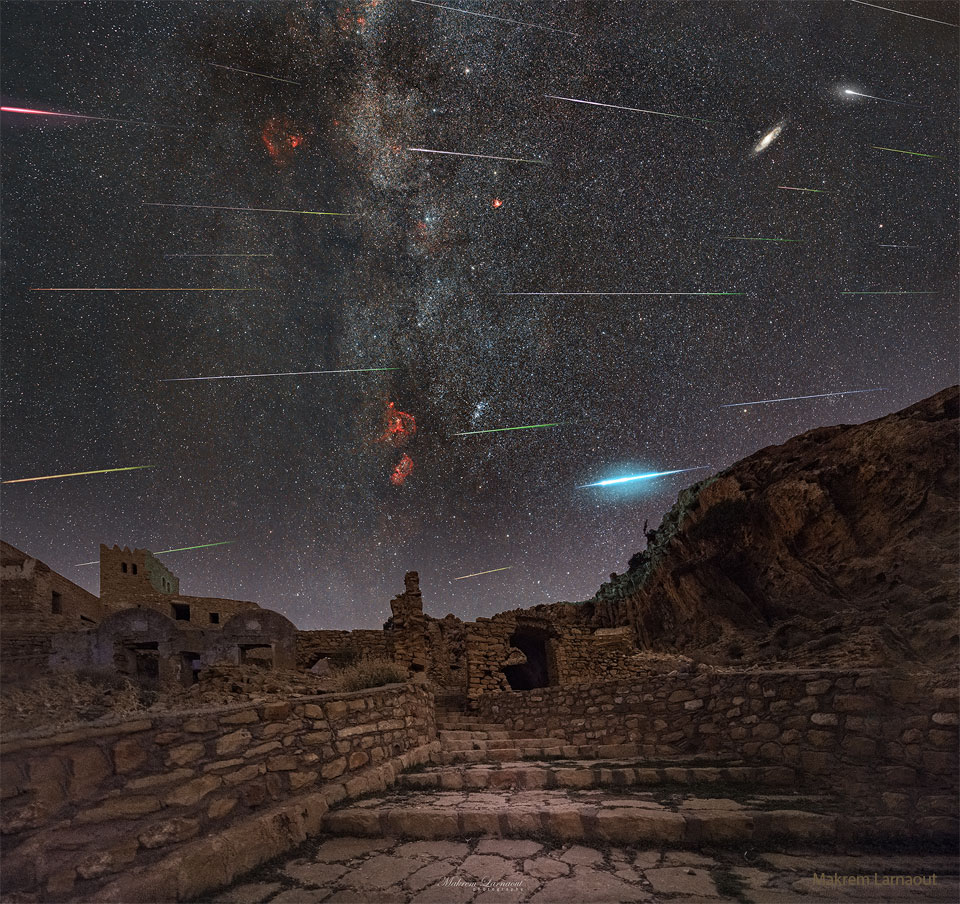2022年8月16日
A Meteor Wind over Tunisia
Image Credit & Copyright: Makrem Larnaout
Explanation: Does the Earth ever pass through a wind of meteors? Yes, and they are frequently visible as meteor showers. Almost all meteors are sand-sized debris that escaped from a Sun-orbiting comet or asteroid, debris that continues in an elongated orbit around the Sun. Circling the same Sun, our Earth can move through an orbiting debris stream, where it can appear, over time, as a meteor wind. The meteors that light up in Earth’s atmosphere, however, are usually destroyed. Their streaks, though, can all be traced back to a single point on the sky called the radiant. The featured image composite was taken over two days in late July near the ancient Berber village Zriba El Alia in Tunisia, during the peak of the Southern Delta Aquariids meteor shower. The radiant is to the right of the image. A few days ago our Earth experienced the peak of a more famous meteor wind — the Perseids.
Tomorrow’s picture: stargate milky way
突尼斯上空的流星雨
影像提供与版权: Makrem Larnaout
说明: 地球会穿过流星风吗?会的,而它们经常以流星雨的形式出现。几乎所有的流星,皆是从绕太阳运行的彗星或小行星散逸出来的沙粒大小碎片,这些碎片则沿着绕行太阳的细扁轨道继续运行。由于我们的地球也是绕行太阳,所以偶而会穿过这些碎片流,随着时间推移,它们看起来像一阵阵迎面吹拂的流星风。不过,在地球大气里发光的这些流星,通常会被摧毁。而它们的流星痕,都可以回溯到天空中的共同辐射点。这幅组合主题影像,是在7月底的宝瓶座δ南流星雨极大期附近的2天,摄于突尼斯古老的柏柏尔人村落Zriba El Alia附近。辐射点则位在影像右缘之外。在数天前,我们的地球经历了另一个更著名流星风(英仙座流星雨)的极大期。
明日的图片: stargate milky way







